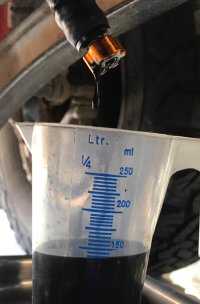Like you,
@Mansfieldman750 I sometimes go to manual 5 fifth gear and drive at 4000 revs for half an hour or so, thinking it may cause a bit of a clean out.
I rarely question the
@WelshGas wisedom, but he recently posted along the lines that STP, Redox etc. fuel treatments are a waste of money, whilst
@Webbah_in_Switzerland posted to the contrary.
Taking up the latter's favourite of:
View attachment 130714
I tried this recently, after having only been able to buy basic (not premium) diesel for a while.
Perhaps I have been kidding myself, but I feel since that the engine is smoother and fuel consumption economy is better getting 40+ mpg for the first time on a long continental trip.
So, I think I am going to persevere with this every 4,000 miles or so and next time try the twin pack:
https://www.amazon.co.uk/dp/B0BWFG75G8?tag=unique09f-21
If it actually makes no difference and I am wasting my money I will live with that. If there is evidence out that that these additives are harmful I have not seen it, but perhaps other forum members know different?

















